Croatia. New Gold and Silver Proof and Colour Coins Dedicated to Distinctive Halubje Bell Ringers
The Croatian National Bank release new collector coins featuring a centuries-old unique cultural tradition.
The Halubje bell ringers are a widely known and admired cultural phenomenon in Croatia with roots reaching back to ancient times. For centuries, the strongest young men who became known as Halubje Bell Ringers roamed villages in the Kastav region, introducing themselves and showing off their physical strength - all in search of a wife. At that time of year, villagers eagerly welcomed them into their homes, as their arrival marked the beginning of spring which meant land cultivation and livestock preparation for grazing. Halubajski zvončari – bell ringers are distinguished from other bell ringer groups by their masks, which completely cover their faces, they also wore sheep skins and rang bells tied around their waists to chase away evil spirits. This tradition and rich cultural legacy has passed down through generations and is widespread in Mediterranean coastal areas where sheep cultivation was the main economic activity for centuries. Despite the pageant’s popularity, various authorities over the centuries attempted to put an end to the festivities and tradition. However, the Halubje bell ringers would always return, with a stronger presence and with greater support from villagers.
Over time, their traditional parading would coincide with the three-day pageant that always follows the same schedule on Shrove Sunday, Monday and Tuesday. Although this pageant is associated with ancient rituals of summoning up spring and new life, and chasing away winter and evil, in the villages of the Kastav region, it still represents an important part of social life, local cuisine, handicrafts and dance. The young men who participate in the parade traditionally wear white trousers and striped sailor T-shirts with sheepskin wraps, and on their heads they sport masks in the form of animal heads with horns and red tongues sticking out. The bell ringers visit about 20 villages a day, stopping in each one for refreshments and socialising with local residents and visitors. In the three days, they tour over 50 villages and hamlets in the region.
Together with other zvončari groups from the Kastav area, this ancient pageant was declared a Croatian cultural asset and was included in the UNESCO Representative List of the Intangible Cultural Heritage of Humanity in 2009. Since last year, the municipal town of Viškovo, which is located in the Kastav region, inaugurated the opening of the House of the Halubje Bell Ringers, a permanent museum and exhibition venue for various events.

The gold and silver coins share the same design and are produced by the Croatian Mint at their facilities in Sveta Nedelja on behalf of the Croatian National Bank. The design of these gold and silver collector coins is the work of the medallic artist Chiara Principe, who, in consultation with the Halubajski Zvončari Association, has created coins that uniquely capture the power, rhythm, and symbolism of this ancient tradition. The obverse side depicts a group of three Halubje bell ringers, all in their black and white striped t-shirts, wearing fearsome animal masks and carrying a banner as they parade through the streets. Above the primary design and along the rim is the text REPUBLIKA HRVATSKA (Republic of Croatia) and below, is the denomination of 100 EURO (gold) or 8 EURO, 4 EURO (silver). The gold one-ounce and silver five-ounce coins include vivid colour to the design which is applied to the bell ringers. The reverse side shows the same group of three bell ringers from behind, wearing their sheepskin cloaks and as seen through an animal mask, the outline of the mask’s fangs framing the scene. Along the upper rim is the commemorative inscription HALUBAJSKI (Halubje) and ZVONČARI (bell ringer) which is placed below the primary design. To the right in a vertical display is the year of issue, 2025.
| Denomination | Metal | Weight | Diameter | Quality | Mintage Limit |
| 4 Euro | 999.9 Silver | 31.1 g. | 38.6 mm. | Proof | 2000 |
| 8 Euro | 999.9 Silver | 155.5 g. | 60 mm. | Proof & Colour | 500 |
| 100 Euro | 999.9 Gold | 31.1 g. | 32 mm. | Proof & Colour | 200 |
Available from the 18th February with delivery scheduled for the end of March. Each coin is encapsulated and presented in a custom case accompanied with a certificate of authenticity. For additional information, please visit the e-webshop of the Croatian Mint.

Download the Greysheet app for access to pricing, news, events and your subscriptions.
Subscribe Now.
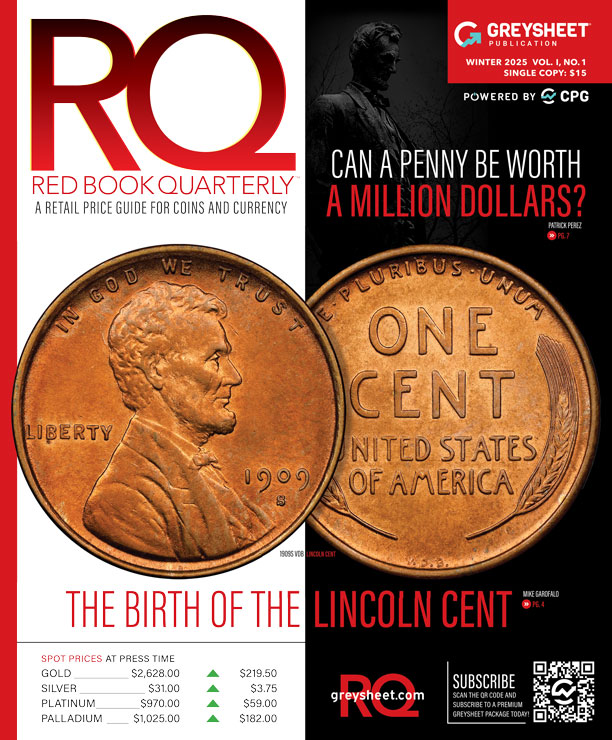
Subscribe to RQ Red Book Quarterly for the industry's most respected pricing and to read more articles just like this.
Author: Michael Alexander


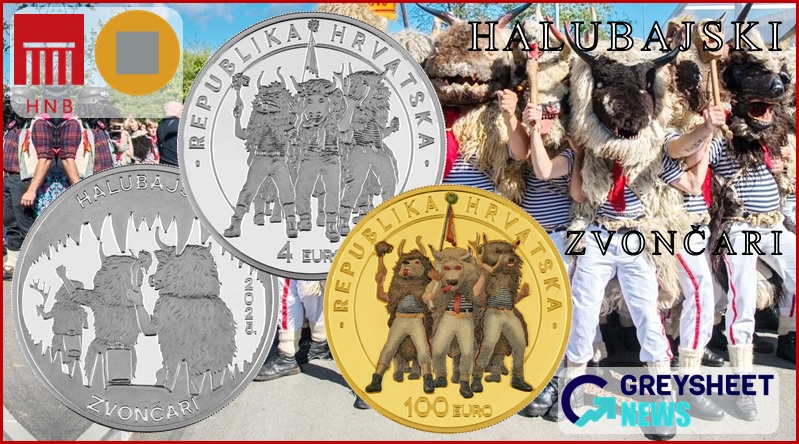






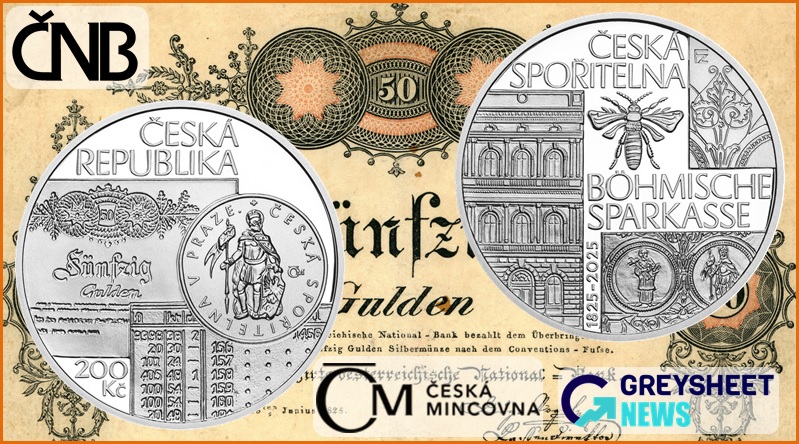
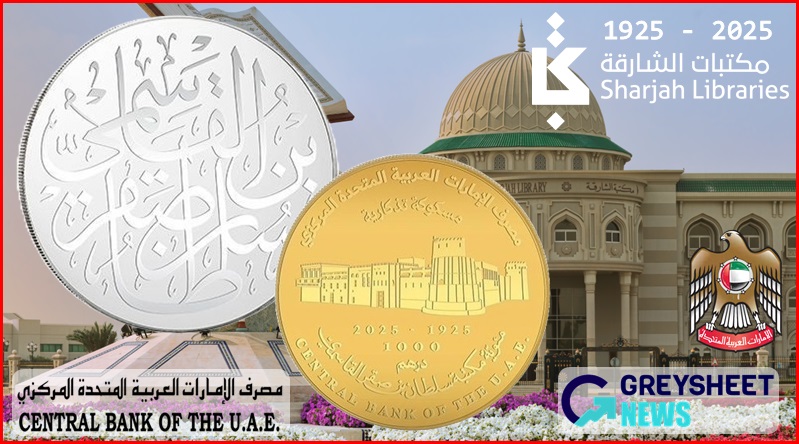
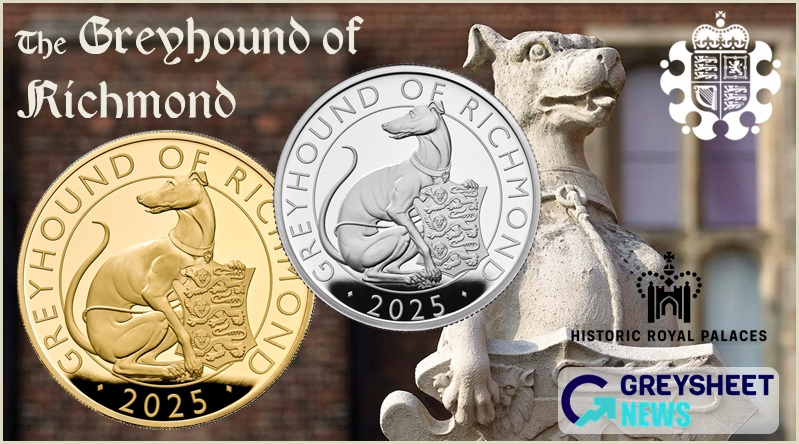
Please sign in or register to leave a comment.
Your identity will be restricted to first name/last initial, or a user ID you create.
Comment
Comments